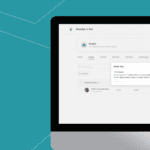
Managing Benefits on Bizedge People Module

How to Add and Edit Employee Information on BizEdge
Employee turnover is a natural part of the workforce life cycle. However, high levels of undesirable turnover or losing people in critical roles can be both costly and disruptive. This is because the significant amount of time, money and effort spent in developing the employees are lost when they leave the organisation.
According to Gallup Workspace, depending on the salary, skill and knowledge level of the employee, a conservative estimate of the cost of replacement can range from one-half to two times the employee’s annual salary. This means a 100-person organisation that pays an average salary of $50000 could have a turnover and replacement costs of approximately $660000 to 2.6 million per year.
Voluntary employee turnover is a fixable problem. With the highly competitive and tight labour market, the loss of good people can be detrimental to a company’s productivity and finance.
Why Talent Retention?
Talent retention is a lot more than money especially when it is a rare talent. Losing rare talent could be the same as saying “you just lost the future”. Why then lose the future when the way to keep it is at your fingertips? Well, it may cost a little (you know what they say about value being attached to what didn’t come on a platter of gold?) but be rest assured that it is worth it.
Improving employee experience by driving culture, implementing stay interviews, improving internal communication among others are a few of the common recommendations given when business owners and team leads ask questions about getting and retaining talent. But how does it work? Is it by increasing salaries? Having a more rigid structure or flexible structure? Where do we find a balance?
What do we mean by inclusion?
The Society for Human Resource Management (SHRM) defines inclusion as the achievement of a work environment in which all individuals are treated fairly and respectfully, have equal access to opportunities and resources, and can contribute fully to the organisation’s success (Source: SHRM’s diversity & inclusion initiative).
Easy ways to include employees
With the currently thriving hybrid/remote work, it is possible to lose touch with your talents, especially the new ones. Covid has adjusted hours. According to Pulse Nigeria, more than 50% of professionals are on the lookout for hybrid and remote jobs rather than daily walk-in jobs.
The following would help you stay at the top of not just your market but your staff as well.
1. Include your employees right from the very first day
Make them a part of their onboarding process. There are HR solutions that allow employees to join this process from the comfort of their homes, wherever they are. (Check out our seamless people management solution Bizedgeapp).
2. Be clear about your holidays
Long gone are the times where staff members weren’t adequately informed of benefits & entitlements at work. Yes, you shared a softcopy of the handbook when work began but let them be aware of processes as well.
3. Check in frequently on employees
Don’t leave your employee for months without checking in. Not all check-ins should be about work. Even the least on the company’s organogram has feelings and a home too. What matters to them? What are their dreams? Where do they want to go? What’s frustrating them? How are they coping outside of work? If married, how’s their family? If single, how are they handling and managing alone?
4. Organise and pay for trainings often
Organising and paying for training for employees cannot be overemphasised. It is a subtle way to show you care about your employees. You want to see them get better. Tracking and assigning these trainings shouldn’t be much of a bother. You can get an all-in-one app that makes that easy to do.
5. Employee recognition letters
Employee recognition letters cannot be overlooked. Has anyone ever told you something that left you smiling all day? That’s what an employee recognition letter does. It makes your employees feel good about your company and company goals; employees who feel recognised and respected are likely to be your best employees. This is one tool at your disposal that practically costs you just a couple of clicks on your computer.
Already having undesirable turnovers?

Relax, it is most likely what you are not doing than what you’re doing.
1. Exit interviews
Do you have exit interviews? This is one way to get enough data to reduce voluntary turnovers. You may not be able to stop them from leaving but you can keep the next from leaving. Ask why they joined your organisation in the first place? Were they able to achieve this reason? Why are they leaving? Where would they be going from your organisation?
2. Present a comeback offer
Let them know you value them and that you do not want to see them go. If they are really good, tell them they will always have a seat in the team. They might still leave but you’ve made a statement.
3. Be aware of competitor offering
What is the competitor’s offering? While some of your outgoing staff might be willing to divulge information about what they get to have in their next job placement, others might not be. Go through the vacancy details of your competitors and international organisations too, don’t just limit yourself to your locality. You’d be surprised if the employee you’re just about to lose got a work offer from an organisation across the continent.
Note: An exit interview should be relaxing and jovial, not as strict as an entrance interview (not like entrance interviews are that rigid anymore). You need their opinion on keeping your staff and as market intelligence for recruiting new talent. And of course, a successful exit interview puts a good word for you.
You shouldn’t allow the myth of HR being unapproachable to thrive in your organisation. About half of voluntarily exiting employees often say that their team leads, managers or the organisation could have done something to prevent them from leaving their job (Source: Gallup).
True, you might be paying your staff fairly well but here’s where “money can’t buy happiness” comes in handy. It might buy what makes you happy but it might not keep your employees in the long run. You must be fairly sure your employees are included and you do not have a toxic environment. Ari Weinzweig once said, “If you don’t create a great and rewarding workplace for your people, they will not do great work.”
